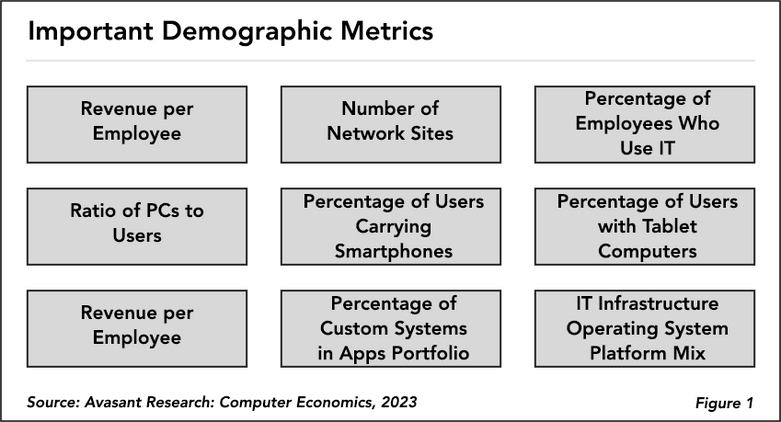Benchmarking is the key to measuring an organization’s IT budget against industry peers. Whether the goal is to compare the organization’s IT spending levels, defend current spending levels, justify new spending requests, or find opportunities for cost reduction, benchmarking is an effective way for IT executives to optimize their IT budgets and better focus their efforts to achieve a state of continuous improvement.
However, business leaders sometimes question the results of benchmarking. They may question the selection of the peer group or the definitions of some spending categories. In other cases, the benchmark does not provide enough detail to give insights into the causes of variances. In short, their expectations are not met.
This special report, available at no charge, is based on decades of benchmarking experience. It provides best practices for benchmarking an organization’s IT budget ratios against industry and peer-group metrics. It reflects the principles that we have found most important in making benchmarking a meaningful exercise.
The first lesson is selecting the right peer group, arguably the most crucial decision. Unfortunately, many companies make the mistake of defining the peer group too narrowly. The benefits they receive from a more narrowly defined sample are often lost because of the statistical uncertainty.
A better approach is to allow a somewhat more broadly defined peer group based on your industry and then compare the demographics of that sample against those of your organization. Some of the most important demographic metrics are shown in Figure 1 from our full report, Best Practices for Benchmarking Your IT Budget Ratios.

“Every restriction you put on the peer group makes the peer group smaller,” said Asif Cassim, principal analyst at Computer Economics, a service of Avasant based in Los Angeles. “Any benefit you get from a more narrowly defined sample is usually lost because of the statistical uncertainty that comes from having a small sample.”
The full report also covers several other important lessons, such as
-
- Understanding which metrics do not need to be industry specific;
- Determining the value of benchmarking by organization size;
- Using percentiles instead of averages;
- Going beyond the traditional percentage of revenue metric; and
- Benchmarking operational spending and capital spending separately.
The report ends with a review of five typical patterns we see in analyzing variances in spending ratios and tracing them back to root causes.
Benchmarking an organization’s IT budget does not give decision-makers all the answers concerning how they should allocate their resources. Nevertheless, an IT spending benchmark is an important element in evaluating the organization’s IT budgetary profile and can provide objective data to justify overall capital and operational spending allocations.
This Research Byte is a brief overview of our report on this subject, Best Practices for Benchmarking Your IT Budget Ratios. In the interest of promoting these best practices, the full report is available at no charge. (click to download)

